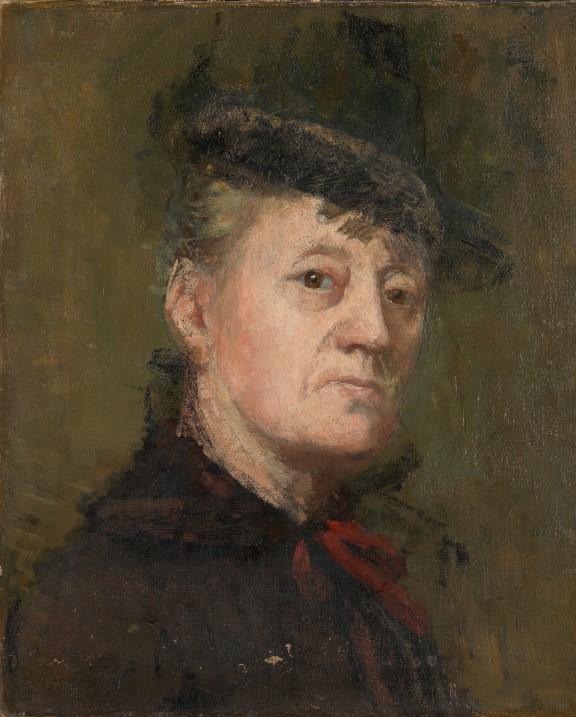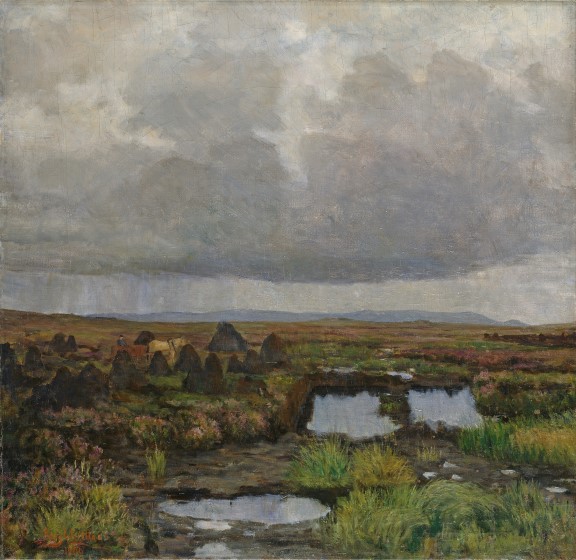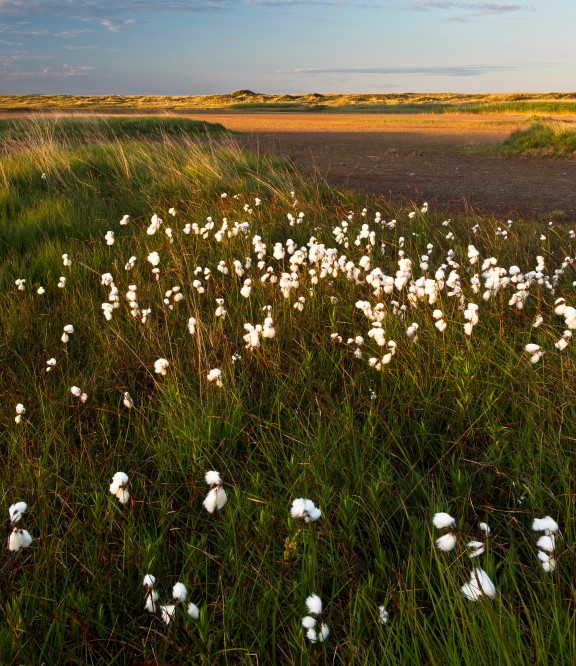
One of the early studies of the peat bogs in Jæren. Kitty Kielland, "Peat Bog on Jæren", 1882
Photo: Nasjonalmuseet / Jacques Lathion
The valuable peat bog
Crossing a bog in the Nordmarka forest north of Oslo in the autumn of 2020
Photo: Ellisiv Brattfjord
Peat bogs
- Bogs cover around 9.8 per cent of the land area of Norway and are a type of wetland.
- Peat is formed by moss, grass, leaves and other organic material remaining in water-rich areas for a long time. Due to lack of oxygen, the material does not decompose fully.
- Over the years, peat has been extracted for building materials, gardening and fuel, among other things.
- It takes nature several thousand years to make a peat bog. The bog grows only one millimetre a year, so a bog that is five metres deep is around 5000 years old.
- Norwegian bogs store at least 950 million tonnes of carbon. This corresponds to 66 years of Norway's annual greenhouse gas emissions.
- According reports from the Intergovernmental Platform on Biodiversity & Ecosystem Services, 85 per cent of the world's wetlands have disappeared.
- In Norway, one-third of the country's bogs have been removed in the last 70 years.
- According to figures from the Norwegian Institute of Bioeconomy Research (NIBIO), around 2600 decares of bog have been cultivated every year between 2007 and 2015 in Norway.
- With effect from 2 June 2020, the Norwegian government banned cultivation of bogs, but local municipalities still have the option of allowing cultivation when certain conditions are met.
The artist in the bog

Kitty Kielland, "Selfportrait", 1887
Photo: Nasjonalmuseet / Børre Høstland
Kitty Kielland
- Christine Lange Kielland (Kitty) was born in Stavanger on 8 October 1843.
- The Kiellands were an affluent family that had lived in Stavanger for several generations.
- Painting became more than a hobby for Kielland after a long illness where she had little else to do.
- In the 1870s she studied under Hans Gude in Karlsruhe in Germany and later under Eilif Peterssen and H. Baisch in Munich.
- She lived and studied in Paris for several years, together with Harriet Backer, among others.
- Kielland fought for women's right to participate fully in art and highlighted differences in the upbringing of boys and girls.
- She was involved in the founding of the Norwegian Association for Women's Rights in 1884.
- Kielland was one of the first Norwegian artists to paint what would become known as neo-romantic mood paintings.
- Kielland exhibited often during her lifetime and participated in all the most important Nordic and international exhibitions where Norwegian artists were represented.
- Before she died in 1914, she bequeathed a large sum to the National Gallery for the procurement of Norwegian art, on condition that the artwork "breaks with tradition and adds new elements to the development of art".
Kitty Kielland, "Study from the Farm Kvianes at Ogna, Jæren", 1878.
Photo: Nasjonalmuseet / Børre Høstland
Unique nature

Kitty Kielland, "Peat Bog on Jæren", 1900.
Photo: Nasjonalmuseet / Jacques Lathion

Cotton-grass on what remains of the old cultural landscape in Jæren. Here at Vaulen, Brusand in Hå municipality, Rogaland County
Photo: © Roy Mangersnes / NN / Samfoto